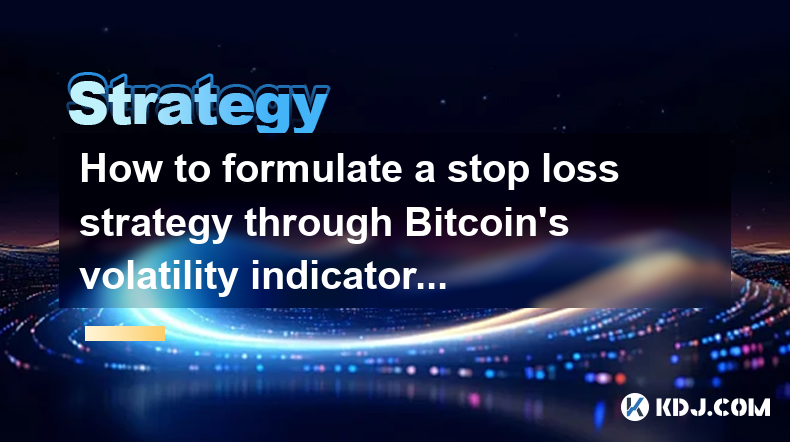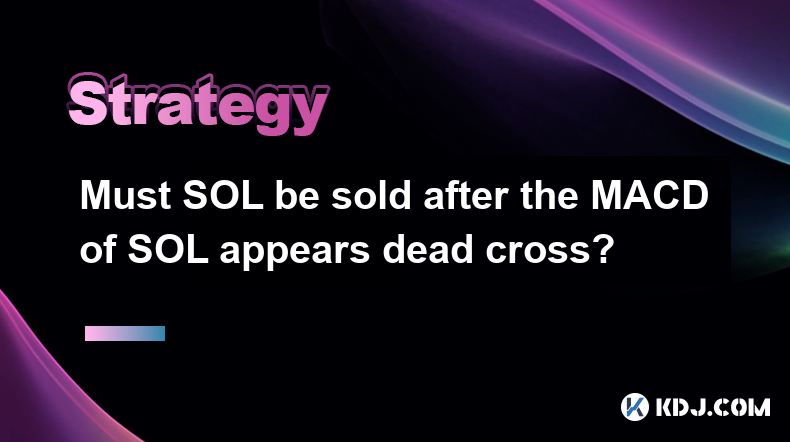-
 Bitcoin
Bitcoin $88,339.1961
0.91% -
 Ethereum
Ethereum $1,623.6446
-1.44% -
 Tether USDt
Tether USDt $1.0000
0.00% -
 XRP
XRP $2.0967
-1.79% -
 BNB
BNB $605.9401
0.19% -
 Solana
Solana $139.2951
-0.86% -
 USDC
USDC $0.9999
0.00% -
 Dogecoin
Dogecoin $0.1638
0.91% -
 TRON
TRON $0.2483
1.38% -
 Cardano
Cardano $0.6385
-1.29% -
 Chainlink
Chainlink $13.3308
-1.87% -
 Avalanche
Avalanche $20.1673
-2.64% -
 UNUS SED LEO
UNUS SED LEO $9.0629
-4.15% -
 Stellar
Stellar $0.2460
-5.31% -
 Sui
Sui $2.3030
1.33% -
 Shiba Inu
Shiba Inu $0.0...01249
-1.52% -
 Toncoin
Toncoin $2.9244
-3.95% -
 Hedera
Hedera $0.1729
-0.43% -
 Bitcoin Cash
Bitcoin Cash $346.6981
1.20% -
 Hyperliquid
Hyperliquid $18.1539
-1.20% -
 Litecoin
Litecoin $79.7883
-1.84% -
 Polkadot
Polkadot $3.7535
-5.04% -
 Dai
Dai $0.9999
-0.01% -
 Bitget Token
Bitget Token $4.4438
-1.20% -
 Ethena USDe
Ethena USDe $0.9992
0.00% -
 Pi
Pi $0.6312
-1.10% -
 Monero
Monero $217.0320
0.33% -
 Pepe
Pepe $0.0...08106
3.02% -
 Uniswap
Uniswap $5.3710
-1.84% -
 OKB
OKB $50.9721
-0.22%
How to formulate a stop loss strategy through Bitcoin’s volatility indicators?
Understanding Bitcoin's volatility indicators, such as Bollinger Bands, Average True Range, and Relative Strength Index, is crucial for determining optimal stop loss placement and managing risk in cryptocurrency trading.
Feb 25, 2025 at 01:37 pm

Key Points
- Understanding Bitcoin's Volatility Indicators
- Identifying Key Levels for Stop Loss Placement
- Utilizing Bollinger Bands for Stop Loss Optimization
- Employing Moving Averages for Dynamic Stop Loss Levels
- Combining Multiple Indicators for Comprehensive Protection
How to Formulate a Stop Loss Strategy Through Bitcoin's Volatility Indicators
Understanding Bitcoin's Volatility Indicators
Bitcoin's volatility, measured by indicators such as Bollinger Bands, Average True Range (ATR), and Relative Strength Index (RSI), is crucial in determining the optimal stop loss level. Bollinger Bands measure the standard deviation of Bitcoin's price movements, providing insight into periods of high and low volatility. ATR quantifies the magnitude of price changes and helps identify potential breakout levels. RSI assesses the overbought or oversold conditions, indicating potential trend reversals.
Identifying Key Levels for Stop Loss Placement
Key levels for stop loss placement include support and resistance levels, moving averages, and psychological barriers. Support levels represent areas where buying pressure tends to emerge, while resistance levels indicate potential obstacles to further price increases. Moving averages smooth out price data, providing a trend gauge that can guide stop loss placement. Psychological barriers, such as Fibonacci levels or round numbers, often act as entry and exit points for traders.
Utilizing Bollinger Bands for Stop Loss Optimization
Bollinger Bands consist of three lines: an upper band, a lower band, and a middle band. The upper band is two standard deviations above the middle band, and the lower band is two standard deviations below the middle band. Stop loss levels can be placed outside the Bollinger Bands, with trailing stop orders adjusting as the bands widen or narrow. This approach capitalizes on Bollinger Bands' ability to identify periods of high or low volatility.
Employing Moving Averages for Dynamic Stop Loss Levels
Moving averages, such as the 50-day SMA or the 200-day EMA, represent the average price over a specific period. Stop loss levels can be placed below a short-term moving average for uptrends or above a long-term moving average for downtrends. As the moving averages shift, so too will the stop loss levels, providing dynamic protection against adverse price movements.
Combining Multiple Indicators for Comprehensive Protection
Combining multiple indicators, such as Bollinger Bands and moving averages, offers a more comprehensive approach to stop loss placement. Using Bollinger Bands to identify periods of high volatility and moving averages to establish trend-based stop loss levels provides a balanced strategy that mitigates the risk of premature exits or excessive losses.
FAQs
- What is the purpose of a stop loss strategy?
A stop loss strategy establishes a predetermined price level at which a trade is automatically closed to limit potential losses in case of an adverse price movement. - How does volatility affect stop loss placement?
Higher volatility increases the risk of triggering stop losses prematurely. Volatility indicators, such as Bollinger Bands or ATR, help identify periods of heightened volatility and adjust stop loss levels accordingly. - What are the potential benefits of using moving averages for stop loss placement?
Moving averages provide a moving target for stop loss levels, automatically adjusting with price trends. This dynamic approach reduces the likelihood of being stopped out prematurely or holding onto losing positions indefinitely. - Can stop loss strategies guarantee profit?
No, stop loss strategies do not guarantee profit. They serve to mitigate risk and protect against excessive losses but cannot consistently ensure profitability in fluctuating cryptocurrency markets. - Is it advisable to use multiple indicators for stop loss placement?
Combining multiple indicators, such as Bollinger Bands and moving averages, offers a more comprehensive stop loss strategy that considers both volatility and trend direction. This approach provides a balance between risk management and profit potential.
Disclaimer:info@kdj.com
The information provided is not trading advice. kdj.com does not assume any responsibility for any investments made based on the information provided in this article. Cryptocurrencies are highly volatile and it is highly recommended that you invest with caution after thorough research!
If you believe that the content used on this website infringes your copyright, please contact us immediately (info@kdj.com) and we will delete it promptly.
- AVAX Price Prediction 2025: Will Avalanche Reach New Heights?
- 2025-04-22 17:50:12
- XRP Price Prediction Shows Bullish Momentum After Coinbase Lists Its Futures Contracts
- 2025-04-22 17:50:12
- Bitcoin is surging again, capturing the spotlight in the crypto world.
- 2025-04-22 17:45:12
- Pi Network (PI) Holds Above $0.63: $5 Price Prediction and Whale Accumulation Fuel Optimism
- 2025-04-22 17:45:12
- One of the cryptocurrencies that ranked in the eleventh place, Chainlink, has been in the spotlight as it is traded at $13.12
- 2025-04-22 17:40:12
- Pi Network's Token Structure Promises a Fair Launch
- 2025-04-22 17:40:12
Related knowledge

What does it mean that long-term SOL holders start to sell?
Apr 22,2025 at 05:22pm
The phenomenon of long-term SOL holders starting to sell their positions can have significant implications for the Solana ecosystem and its native cryptocurrency, SOL. This article delves into the reasons behind this trend, its potential effects on the market, and what it could mean for investors and the broader cryptocurrency community. Understanding L...

How many times does XRP's Willy indicator enter the oversold zone to confirm the bottom?
Apr 22,2025 at 05:14pm
The Willy indicator, a popular tool among cryptocurrency traders, is used to identify potential market bottoms and tops by analyzing the divergence between price and volume. When it comes to XRP, understanding how many times the Willy indicator enters the oversold zone to confirm the bottom is crucial for making informed trading decisions. In this artic...

Is it necessary to sell when SOL's RSI index exceeds 70?
Apr 22,2025 at 05:56pm
When discussing the trading of cryptocurrencies like Solana (SOL), understanding technical indicators such as the Relative Strength Index (RSI) is crucial for making informed decisions. The RSI is a momentum oscillator that measures the speed and change of price movements. An RSI value above 70 is typically considered an indication that an asset might b...

How to track and analyze the changes in LINK's whale addresses?
Apr 22,2025 at 05:00pm
To track and analyze the changes in LINK's whale addresses, one must understand the tools and methods available for monitoring large holders of Chainlink (LINK). This process involves identifying whale addresses, tracking their transactions, and analyzing their impact on the market. Here's a detailed guide on how to achieve this. Understanding Whale Add...

What does the increase in LTC's USDT premium rate mean?
Apr 22,2025 at 04:49pm
The increase in LTC's USDT premium rate is a significant indicator within the cryptocurrency market, particularly for Litecoin (LTC) and its trading dynamics. This phenomenon occurs when the price of Litecoin in USDT (Tether) on a specific exchange exceeds its price in USD on other platforms or in the broader market. Understanding the implications of th...

Must SOL be sold after the MACD of SOL appears dead cross?
Apr 22,2025 at 05:50pm
The MACD (Moving Average Convergence Divergence) indicator is a popular tool used by traders to gauge momentum and potential trend reversals in the cryptocurrency market, including Solana (SOL). A dead cross, also known as a bearish crossover, occurs when the MACD line crosses below the signal line, suggesting a potential bearish trend. However, whether...

What does it mean that long-term SOL holders start to sell?
Apr 22,2025 at 05:22pm
The phenomenon of long-term SOL holders starting to sell their positions can have significant implications for the Solana ecosystem and its native cryptocurrency, SOL. This article delves into the reasons behind this trend, its potential effects on the market, and what it could mean for investors and the broader cryptocurrency community. Understanding L...

How many times does XRP's Willy indicator enter the oversold zone to confirm the bottom?
Apr 22,2025 at 05:14pm
The Willy indicator, a popular tool among cryptocurrency traders, is used to identify potential market bottoms and tops by analyzing the divergence between price and volume. When it comes to XRP, understanding how many times the Willy indicator enters the oversold zone to confirm the bottom is crucial for making informed trading decisions. In this artic...

Is it necessary to sell when SOL's RSI index exceeds 70?
Apr 22,2025 at 05:56pm
When discussing the trading of cryptocurrencies like Solana (SOL), understanding technical indicators such as the Relative Strength Index (RSI) is crucial for making informed decisions. The RSI is a momentum oscillator that measures the speed and change of price movements. An RSI value above 70 is typically considered an indication that an asset might b...

How to track and analyze the changes in LINK's whale addresses?
Apr 22,2025 at 05:00pm
To track and analyze the changes in LINK's whale addresses, one must understand the tools and methods available for monitoring large holders of Chainlink (LINK). This process involves identifying whale addresses, tracking their transactions, and analyzing their impact on the market. Here's a detailed guide on how to achieve this. Understanding Whale Add...

What does the increase in LTC's USDT premium rate mean?
Apr 22,2025 at 04:49pm
The increase in LTC's USDT premium rate is a significant indicator within the cryptocurrency market, particularly for Litecoin (LTC) and its trading dynamics. This phenomenon occurs when the price of Litecoin in USDT (Tether) on a specific exchange exceeds its price in USD on other platforms or in the broader market. Understanding the implications of th...

Must SOL be sold after the MACD of SOL appears dead cross?
Apr 22,2025 at 05:50pm
The MACD (Moving Average Convergence Divergence) indicator is a popular tool used by traders to gauge momentum and potential trend reversals in the cryptocurrency market, including Solana (SOL). A dead cross, also known as a bearish crossover, occurs when the MACD line crosses below the signal line, suggesting a potential bearish trend. However, whether...
See all articles























































































